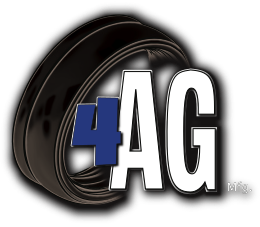The Sidewall Compaction in Planting: How to Avoid It?
It's time for planting season, but many fields are flooded. There are likely to be a lot of farmers heading to fields that aren't ideal for planting. If the crop is "muddied in" and there is a dry spell following planting, sidewall compaction can be a problem in wet soils. If the next rain is on the way or the yield penalty for planting too late is growing, it's difficult to wait for the soil to dry out. At that time you may need closing wheels for planters.
Shallow Planting is one of the Factors That Contribute to the Problem
Sidewall compaction is caused by a variety of factors. A seed-vee opening in wet soil is often cited as the primary cause, but going to plant too shallow is the primary issue. It is recommended that corn seed be planted 2 to 3 inches deep in most situations in order to allow for adequate root development. Corn planters with angled closing wheels, which are the most common, were built with this planting depth in mind. This means that when the seed-vee is closed properly, the furrow sidewalls will be fractured, thereby eliminating sidewall compaction and allowing seed-to-soil contact.
It's common for press wheels to be set with too much down pressure, causing seeds to be over-packed into wet soil. It is difficult for seedling roots to penetrate the soil when planting shallowly because of the press wheel compaction. At an illusionary point about 2 inches underneath the soil surface, the angled press wheels meet. Soil contact is maintained at seeding depth while the sand-vee is completely closed.
So, the down pressure on the press wheels must be checked at the seeding depth, not at the top of a seed-vee. Down pressure springs can be tightened if the seed-soil contact is adequate, but only if necessary. To close the seed-vee, the angled closing wheels need to pinch the seed-vee, so make sure the planter is level or even slightly tail down.
Closing Wheels for Seed-vee
If the standard closing wheels are unable to close the seed-vee, a variety of attachments are available. The soil in front of the planting unit may be filled with coulters or intermeshing row cleaners so that the seed-vee can be closed. However, in wet or dry weather, this loose soil often adheres to the depth gauge wheels or dries out the seed zone. After the seed has been sown in the furrow, loose soil can be used to close the seed-vee. Spiked closing wheels are an alternative to the standard press wheels that till in the seed's sidewall. Several brands are available.
Seed-to-soil contact is maintained, but air pockets around the seed are reduced by the spoked wheels' less aggressive design. Soil drying is a problem with more aggressive spoked wheels, which necessitate the use of a seed firmer and a drag chain to level the soil.
Contact 4AG Manufacturing to know more about seed-vee and get a closing wheels for planters to better yielding.

